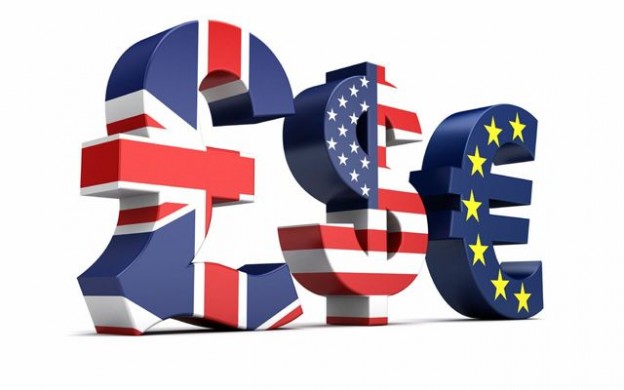Pound Sterling – Despite an improving picture emerging for the health of the UK economy, this week was one of declines against the US Dollar. On Monday the Pound was little changed against the Euro and US Dollar due to an industry report showing that home sellers raised their asking prices for a sixth-straight month in June.

To ask a currency expert a question direct, click HERE
Or to receive a FREE, NO OBLIGATION quote please click HERE
Sterling continued…………. Tuesday saw it weaken against the Dollar further, falling from the previous weeks four-month high as economists waited for the release of a report which showed that consumer price inflation in the UK increased in May, the first increase since February.
The Office for National Statistics said that the inflation rate climbed to 2.7% in May, beating expectations. Inflation has been stubbornly above the Bank of England’s 2% target for 3 and 1/2 years and is expected to hit 3% at some point this year.
Midweek the Pound was little changed against the US Dollar and Euro as investors awaited the release of the latest Bank of England minutes for its June policy meeting, the last one to be held by outgoing governor Mervyn King.
The Pound declined heavily after Federal Reserve Chairman Ben Bernanke announced that the Central Bank could end its asset purchasing programming next year. As a result Sterling dropped to its lowest level in two weeks. Bernanke said that the Fed will ‘moderate’ its $85 billion monthly purchases if economic growth in the US is consistent with forecasts.
US Dollar
The ‘Greenback’ had a week of gains. On Monday it strengthened against the Euro and Japanese Yen ahead of the Federal Reserve’s two-day policy meeting. The currency was also supported by data that showed that the cost of living in the US rose in May after two straight months of decline.
On Thursday the US currency soared against the majority of its peers after the Federal Reserve announced that it could curb its monetary easing programme if the US economy continues to improve. The US Dollar jumped against emerging market currencies as investors flocked to the safe haven Dollar. The currency hit its highest level in a week against the Yen.
On Friday the ‘Greenback’ was heading for a weekly gain against all of its major peers ahead of next week’s data releases for home prices and durable goods orders.
The Euro
The Euro also had a week of declines despite showing some signs that the Eurozone is improving. On Monday it was weaker against a number of its peers after the French government called for a weaker Euro to help boost exports.
It then weakened against the US Dollar and a number of major peers after the association of European car makers reported that car sales across the European Union slumped by 5.9% in May. The data showed sharp falls in demand in many key European markets. New car sales fell 10.4% in France, 9.9% in Germany, and 8% in Italy supporting the belief that the Eurozone’s problems are far from over, In Cyprus sales crashed by 41.4%.
On Thursday the Euro tumbled against the US Dollar and fell against the Pound following the Federal Reserve’s announcement that it will curb its quantitative easing programme if the US economy continues to improve. Adding to the currency’s weakness was the release of data showing that the latest German Purchasing Manager Index for Manufacturing declined in June. The data caused investors to take a risk off approach as concerns remain over the Eurozone.
Australian Dollar
The ‘Aussie’ continued its freefall decline this week as demand for the currency was outweighed by demand for US Dollars. The currency fell against all of its most traded peers after the Reserve Bank of Australia indicated that the currency may weaken further.
It then declined to a three year low on Thursday after data showed that Chinese manufacturing contracted and the Federal Reserve signalled that it would exit its monetary easing programme in the near future. China’s manufacturing Purchasing Managers Index dropped to 48.3 in June from 49.2 the prior month, according to HSBC Holdings Plc and Markit Economics.
Adding to the ‘Aussie’s’ woes was the revelation that economists have raised their forecasts for the possibility of the country sliding into recession in the next 12 months.
New Zealand Dollar
The ‘Kiwi’ hit its highest-level in a month against its Australian relation this week after consumer confidence in the smaller Oceanic nation climbed by its biggest margin in three years. Alas it wasn’t to last.
On Tuesday the currency followed its Australian relation downward as investors awaited the outcome of the Federal Reserve’s two day policy meeting.
The ‘Kiwi’ then fell for a fifth day against the US Dollar due to Bernanke’s press conference. The weak data out of China also weighed heavily upon the currency. Also weighing on the New Zealand currency was the release of data showing that the Gross domestic product of the nation grew at half the expected pace in the first quarter of the year.
Canadian Dollar
The ‘Loonie’ erased gains made against the U.S. dollar on Monday after reports suggested that Federal Reserve Chairman Ben Bernanke was likely to soon signal that an improving U.S. economy will allow for a tapering of the central bank’s bond-buying program which of course he did.
After the Fed press conference the Canadian currency fell to a two month low against the US Dollar. With fewer US Dollars in circulation their value will increase making the currency more attractive to investors. Also weighing upon the currency was the 2.9% tumble made by Crude oil, Canada’s biggest export.
Do you have a foreign currency requirement?
To ask a currency expert a question direct, click HERE
To receive a FREE, NO OBLIGATION quote please click HERE.
~~~~~~~~~~~~~~~~~~~~~~~~~~~
Any opinions expressed in this document are those of TorFX analysts. Any analysis and/or forecasts provided are aimed at helping clients understand market conditions and developing trends. Clients are wholly responsible for their own trading decisions.


 Hot Features
Hot Features














too young, too naive